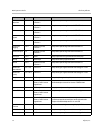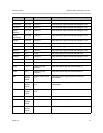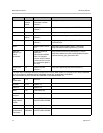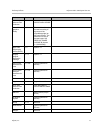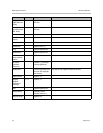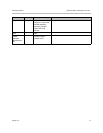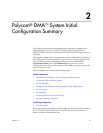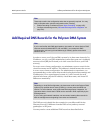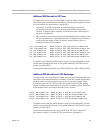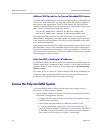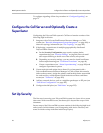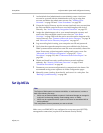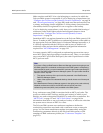
DMA Operations Guide Add Required DNS Records for the Polycom DMA System
22 Polycom, Inc.
Add Required DNS Records for the Polycom DMA System
In order to access your Polycom DMA system by its host name instead of by
IP address, you (or your DNS administrator) must first create an A (address)
resource record (RR) for IPv4 and/or AAAA record for IPv6 on your DNS
server(s).
For a two-server cluster configuration, at a minimum, create a record for the
virtual host name and IP address. This address is shared between the servers
in a two-server cluster configuration. For administrative convenience, we
recommend that you also create alias records for the physical host name(s) and
IP address(es). For a superclustered system, A/AAAA records for each
physical host name, physical IP address, virtual host name, and virtual IP
address are mandatory.
The DNS server(s) should also have entries for your Microsoft® Active
Directory® server (if different from the DNS server) and any external
gatekeepers or SIP peers.
You may need to create additional DNS records as described below.
Note
These topics outline the configuration tasks that are generally required. You may
wish to complete other optional configuration tasks, including:
• Enable cascading of conferences (see “About Cascading” on page 182).
• Configure calendaring service (“Microsoft Exchange Server Integration” on
page 164).
Note
If you’re not familiar with DNS administration, the creation of various kinds of DNS
resource records (A/AAAA,NAPTR, NS, and SRV), your enterprise’s DNS
implementation, and tuning for load balancing (if needed), please consult with
someone who is.
Note
Depending on local DNS configuration, the host name could be the Polycom DMA
system’s fully qualified domain name (FQDN) or a shorter name that DNS can
resolve. For some features, such as Microsoft Exchange Server integration, it’s
imperative that the virtual host’s FQDN can be resolved in DNS, especially by the
Exchange server.
If you’re using split network interfaces, we recommend creating alias records for
both the management and signaling host names and addresses.



